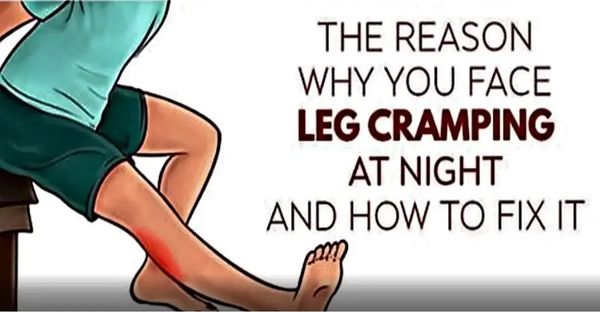Nighttime Leg Cramps: Causes, Relief, and Prevention
Nighttime leg cramps can be a painful disruption to your sleep. These sudden, involuntary muscle contractions often strike the upper leg, calf, or feet, lasting from a few seconds to a couple of minutes. Unlike restless leg syndrome, which is not painful and allows movement, these cramps can temporarily immobilize your legs, leaving you uncomfortable. While not a serious health threat, they can significantly impact your rest.
Though the exact causes remain unclear, factors like nutrient deficiencies, dehydration, and lack of physical activity may contribute to nighttime leg cramps. Fortunately, simple strategies can help relieve and prevent them, promoting better sleep and comfort.
Tips for Relief and Prevention
Here are effective ways to manage and reduce nighttime leg cramps:
- Stay Active: Avoid prolonged sitting or standing. Incorporate regular walking or light exercise into your daily routine to improve circulation and reduce cramp risk.
- Stretch Regularly: Gently stretch the affected muscle during a cramp to relax it and relieve pain faster. Daily stretching, especially before bed, can also prevent cramps.
- Stay Hydrated: Drink plenty of water throughout the day, even if you’re not thirsty, to support muscle function and prevent cramps caused by dehydration.
- Massage and Acupuncture: Deep tissue massage or acupuncture may help reduce the frequency and intensity of cramps by relaxing muscles and improving blood flow.
- Epsom Salt Baths: Soak in a warm bath with Epsom salt, which is rich in magnesium, to relax muscles. Alternatively, massage the affected area with Epsom salt for quick relief.
- Boost Magnesium Intake: Magnesium supports muscle relaxation. Include magnesium-rich foods like nuts, seeds, avocados, and plums in your diet. You can also make a homemade magnesium oil by mixing magnesium flakes with water for topical use.
By adopting these strategies, you can effectively manage nighttime leg cramps, ensuring more restful and pain-free sleep.
Frequently Asked Questions (FAQs)
1. What causes nighttime leg cramps?
The exact cause is unclear, but potential triggers include dehydration, nutrient deficiencies (like magnesium or potassium), prolonged inactivity, overexertion, or certain medications.
2. How are nighttime leg cramps different from restless leg syndrome?
Nighttime leg cramps are painful, involuntary muscle contractions that temporarily immobilize the leg. Restless leg syndrome causes an uncomfortable urge to move the legs without pain or immobilization.
3. When should I see a doctor about leg cramps?
If cramps are frequent, severe, or accompanied by swelling, redness, or persistent pain, consult a healthcare provider to rule out underlying conditions like electrolyte imbalances or nerve issues.
4. Can medications cause nighttime leg cramps?
Yes, certain medications, such as diuretics or statins, may contribute to cramps. Talk to your doctor if you suspect a medication is causing your symptoms.
5. Are there specific exercises to prevent leg cramps?
Yes, stretching exercises targeting the calves, hamstrings, and quadriceps before bed can help. Examples include calf stretches or gentle yoga poses.
Additional Tips for Managing Nighttime Leg Cramps
- Warm Up Before Bed: A short walk or light stretching session in the evening can improve circulation and reduce cramp risk.
- Check Your Footwear: Wear supportive shoes during the day to avoid muscle strain, which can contribute to nighttime cramps.
- Adjust Sleeping Position: Sleeping with loose bedding or elevating your feet slightly may prevent cramps by reducing muscle tension.
- Monitor Medications: If you’re on medications known to cause cramps, discuss alternatives or supplements with your doctor.
- Track Your Symptoms: Keep a journal of when cramps occur, including diet, activity, and hydration levels, to identify potential triggers.
Incorporating these habits into your routine can significantly reduce the frequency and severity of nighttime leg cramps, helping you enjoy uninterrupted, restful sleep.

